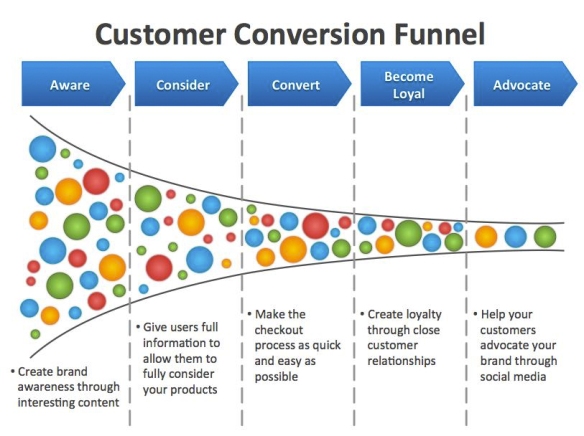
Lately, I’ve been thinking way too much about organic B2B social media marketing. For obvious reasons, it’s where I play and have played for the last eight years. In that time, I’ve worked for some of the largest companies in the world and If you were to ask me what keeps me up at night it would vacillate between how can I do more with the tools and resources I have available to me and what am I missing? This is the great struggle for the enterprise in social media. Where does it fit? Does it fit?
I can tell you answering any of these questions requires some soul searching. The bottom line is that creating a solid, measurable, B2B social media strategy is extremely difficult, and to say that the enterprise just doesn’t have a clue, though it makes for great copy, just isn’t true. They know what’s up, to a degree. Whatever their degree of understanding is, the stark reality is that the pressure is on every CMO to make something of the potential that social media might offer the organization.
Let’s talk about business value
That clock you hear in your cube at the office? That’s for your benefit. It’s ticking and you need to figure out real quick where social media fits within your org. I’m of the opinion that social has to be part of any org; and where the rubber meets the road is the understanding or lack of understanding of those that are entrusted with managing it. My quick and dirty argument is that if you don’t use social then what are you going to do?
But let’s back up. You see, the challenge in your organization as it is in every other B2B organization, is that solving for X in social media, boils down to closing the chasm between conversations and conversions. It’s brutal at the B2B level.
Conversions in social media in general, in the purest sense of the word, can be few and very far between. But the same goes for conversations. Can we get people to click on content? Yes. Can we get people to talk about that content? Not really. We can get them to like, share and retweet but those are passive activities. They’re easy and lazy forms of what everyone defines as engagement. Now snap B2B on top of that. Uh-oh.
To put this in terms we can all relate to. A home run in B2B social media from an engagement standpoint for some companies might be 1%. That’s right,1%.
Time to temper those expectations or time to innovate.
I have a suggestion though. Maybe we need to look at B2B social media metrics differently and perhaps weight them differently. If you can get the data right, you can get the analytics right, right? Maybe I’m suggesting that conversations at the the B2B level, are so tough to come by, that maybe we need to measure them differently? Quit looking at them through a B2C lens.
Let’s simplify this. Would you agree that essentially, B2B marketers, are relying on a definition of engagement that a) really doesn’t mean much anymore in social media and b) shouldn’t apply to them? One could argue on behalf of both points.
The way engagement is and has been measured has been fairly consistent from the very beginning, but that doesn’t mean it’s right. What I’m really saying is that in place of more quantifiable metrics, the best that we have or the best that is presented to us as metrics by various tools and platforms, is how we’re measuring success. Likes, loves, mentions, favorites, follows, shares. expands and clickthroughs are our barometers for success in social media. Those are good but we need more, we need better.
For myself, I look at all of those things the same way, they’re good metrics and they give me a glimpse of something, a taste of something, a start, a start to something, something that could turn into something more. That’s it. It’s a pulse and it might be the closest we can get to a customer, client, prospect or partner, short of being with them in the flesh; and that’s pretty damn compelling. However, if we want to move the needle, then we need to do a better job of measuring customer engagement. Why? We need a better snapshot of who does what with our content. Should I care, that you took a millisecond to share, like or re-tweet a piece of my content? Not really, but if I know more about you. then maybe I can gauge and measure your INTENT.
You’re only as good as your content
The driving force behind this will be content. Content is driving everything. Great content, bad content, middle of the road content. All of it, in all its many different forms, is driving e-v-e-r-y-t-h-i-n-g…. We call it content, but back in the day it was a newspaper insert, a magazine ad, a radio spot, a 30 second commercial on TV. The form has changed but not the function. Get our attention.
What’s consistently baked into that content? A brands message. The point of that message? Buy our stuff. And Social media? What’s its form? What’s its function? Buy our stuff. The difference between the old and the new, social can be a more direct conduit to the customer. The problem? One voice to two ears. Multiply that exponentially and what do you get? A funnel with noise.

Social media marketer doesn’t mean social media analytics guru
If we can’t get comfortable with a firm definition of engagement where the only thing that matters is, if there is some type of conversion behind it, then we need to at least get a better idea of who our followers are; or who is most engaged with our stuff. The keys will be your content and how your audience is engaging with it.
The bottom line will be the data that’s derived from your content. Quality data, not just likes and mentions. Once we have the data, then we can make better decisions and informed decisions on what’s working, what’s not and how we’re going to reach those that matter. I’d also like to suggest that having a robust and separate social media analytics practice would be one of the wisest investments the enterprise could have going forward. Translation: Just because you might be a CMO or a director, doesn’t mean you’re a data scientist. Maybe you are but in my opinion, it’s the only way the enterprise is going to move the needle forward in 2018 with social media. Take the analytics side of the equation seriously and fund it properly.
With social media and its various platforms we do what we do and it is what it is; and because of that, you can do anything, try anything and say anything. For brands, that’s the great potential.





